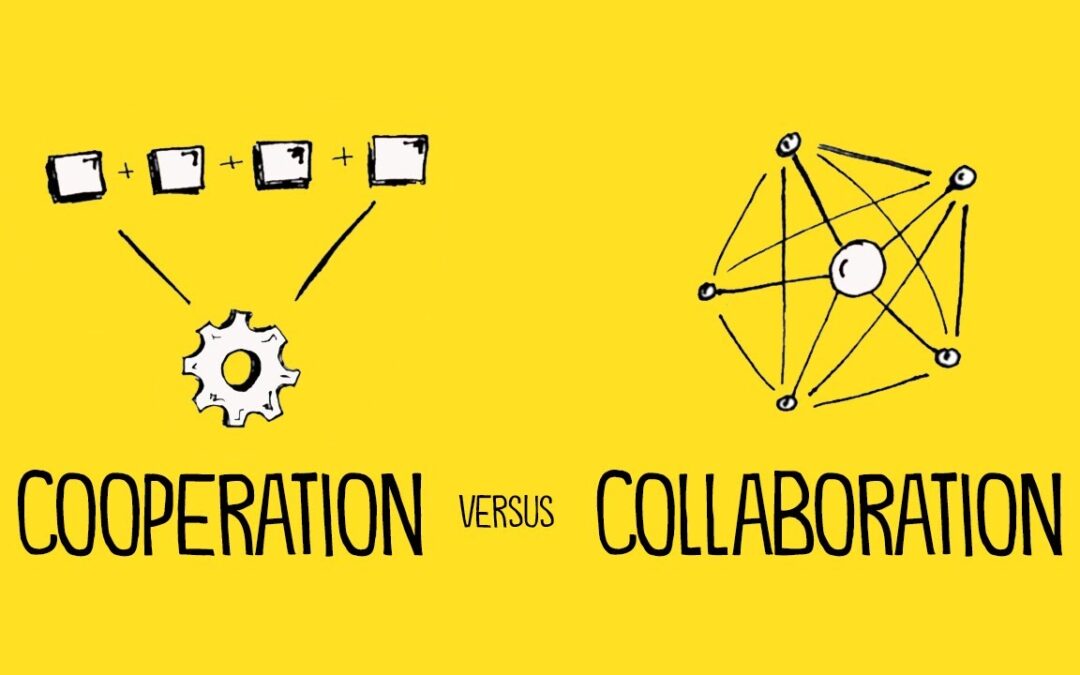
by Robyn Bolton | Oct 14, 2024 | Innovation, Leadership, Stories & Examples
Once upon a time, in a lush forest, there lived a colony of industrious beavers known far and wide for their magnificent dams, which provided shelter and sustenance for many.
One day, the wise old owl who governed the forest decreed that all dams must be rebuilt to withstand the increasingly fierce storms that plagued their land. She gave the beavers two seasons to complete it, or they would lose half their territory to the otters.
The Grand Design: Blueprints and Blind Spots
The beaver chief, a kind fellow named Oakchew, called the colony together, inviting both the elder beavers, known for their experience and sage advice and the young beavers who would do the actual building.
Months passed as the elders debated how to build the new dams. They argued about mud quantities, branch angles, and even which mix of grass and leaves would provide structural benefit and aesthetic beauty. The young beavers sat silently, too intimidated by their elders’ status to speak up.
Work Begins: Dams and Discord
As autumn leaves began to fall, Oakchew realized they had yet to start building. Panicked, he ordered work to commence immediately.
The young beavers set to work but found the new method confusing and impractical. As time passed, progress slowed, panic set in, arguments broke out, and the once-harmonious colony fractured.
One group insisted on precisely following the new process even as it became obvious that they would not meet the deadline. Another reverted to their old ways, believing that a substandard something was better than nothing. And one small group went rogue, retreating to the smallest stream to figure it out for themselves.
As the deadline grew closer, the beavers worked day and night, but progress was slow and flawed. In desperation, Oakchew called upon the squirrels to help, promising half the colony’s winter food stores.
Just as the first storm clouds gathered, Oakchew surveyed the completed dams. Many were built as instructed, but the rushed work was evident and showed signs of weakness. Most dams were built with the strength and craftsmanship of old but were likely to fail as the storms’ intensity increased. One stood alone and firm, roughly constructed with a mix of old and new methods.
Wisdom from the Waters: Experiments and Openness
Oakchew’s heart sank as he realized the true cost of their efforts. The beavers had met their deadline but at a great cost. Many were exhausted and resentful, some had left the colony altogether, and their once-proud craftsmanship was now shoddy and unreliable.
He called a final meeting to reflect on what had happened. Before the elders could speak, Oakchew asked the young beavers for their thoughts. The colony listened in silent awe as the young builders explained the flaws in the “perfect” process. The rogue group explained that they had started building immediately, learning from each failure, and continuously improving their design.
“We wasted so much time trying to plan the perfect dam,” Oakchew admitted to the colony. “If we had started building sooner and learned from our mistakes, we would not have paid such a high cost for success. We would not have suffered and lost so much if we had worked to ensure every beaver was heard, not just invited.”
From that day forward, the beaver colony adopted a new approach of experimentation, prototyping, and creating space for all voices to be heard and valued. While it took many more seasons of working together to improve their dams, replenish their food stores, and rebuild their common bonds, the colony eventually flourished once more.
The Moral of the Story (just in case it isn’t obvious)
The path to success is paved not with perfect plans but with the courage to act, the wisdom to learn from failures, and the openness to embrace diverse ideas. True innovation arises when we combine the best of tradition with the boldness of experimentation.

by Robyn Bolton | Oct 9, 2024 | Innovation, Leadership
In our race to enable and support hybrid teams, our reliance on collaboration software has inadvertently caused us to forget the art of true collaboration.
The pandemic forced us to rely on digital platforms for communication and creativity. But as we embraced these tools, something essential was lost in translation. Last week, I watched team members sitting elbow-to-elbow spend two hours synthesizing discovery interviews and debating opportunity areas entirely by chat.
What collaboration is
“Collaboration” seems to have joined the ranks of meaningless corporate buzzwords. In an analysis of 1001 values from 172 businesses, “collaboration” was the #2 most common value (integrity was #1), appearing in 23% of the companies’ value statements.
What it means in those companies’ statements is anyone’s guess (we’ve all been in situations where stated values and lived values are two different things). But according to the dictionary, collaboration is “the situation of two or more people working together to create or achieve the same thing.”
That’s a short definition with a lot of depth.
- “The same thing” means that the people working together are working towards a shared goal in which they have a stake in the outcome (not just the completion).
- “Working together” points towards interdependence, that everyone brings something unique to the work and that shared goal cannot be achieved without each person’s unique contribution.
- “Two or more people” needing each other to achieve a shared outcome requires a shared sense of respect, deep trust, and vulnerability.
It’s easy to forget what “collaboration” means. But we seem to have forgotten how to do it.
What collaboration is not
As people grow more comfortable “collaborating” online, it seems that fewer people are actually collaborating.
Instead, they’re:
- Transacting: There is nothing wrong with email, texts, or messaging someone on your platform of choice. But for the love of goodness, don’t tell me our exchange was a collaboration. If it were, every trip to the ATM would be a team-building exercise.
- Offering choices: When you go out to eat at a fast-food restaurant, do you collaborate with the employee to design your meal? No. You order off a menu. Offering a choice between two or three options (without the opportunity to edit or customize the options), isn’t collaboration. It’s taking an order.
- Complying: Compliance is “the act of obeying a law or rule, especially one that controls a particular industry or type of work.” Following rules isn’t collaboration, it’s following a recipe
- Cooperating: Cooperation is when two or more people work together independently or interdependently to achieve someone else’s goal. Collaboration requires shared objectives and ownership, not just shared tasks and timelines.
There’s nothing wrong with any of these activities. Just don’t confuse them with collaboration because it sends the wrong message to your people.
Why this matters
This isn’t an ivory-tower debate about semantics.
When people believe that simple Q&A, giving limited and unalterable options, following rules, and delivering requests are collaboration, they stop thinking. Curiosity, creativity, and problem-solving give way to efficiency and box-checking. Organizations stop exploring, developing, and innovating and start doing the same thing better, faster, and cheaper.
So, if you truly want your organization to grow because it’s filled with creative and empathetic problem-solvers, invest in reclaiming the true spirit of collaboration. After all, the next big idea isn’t hiding in a chat log—it’s waiting to be born in the spark of genuine collaboration.

by Robyn Bolton | Oct 1, 2024 | Innovation, Leadership, Metrics, Stories & Examples, Strategy
In the often murky world of corporate communication, a leaked MrBeast document has emerged as a beacon of clarity. Far from being your typical vague, jargon-filled memo, this onboarding document is a crystal-clear recipe for success that’s as refreshing as it is rare.
But first, let’s address the elephant in the room. MrBeast’s empire isn’t without its share of controversy. Reports of toxic work environments, unsafe conditions for contestants, and allegations of rigged games cast a shadow over his content creation machine and his leadership capabilities. These are serious issues that merit investigation and discussion. As a result, this post isn’t an endorsement of MrBeast as a leader, it’s an endorsement of an onboarding document that he wrote.
The Secret Sauce: Clarity Meets Innovation
What sets this document apart is its razor-sharp clarity and relentless focus on creativity. Unlike the vague platitudes that plague many corporate communications, job descriptions, and performance matrixes, this document clearly outlines expectations, success metrics, and the strategies and tactics to fuel continuous innovation.
This clarity is transformative for people and organizations. When team members understand both the guardrails and the goals, they channel their creative energy into groundbreaking ideas rather than second-guessing their approach and worrying about repercussions.
Expectations: Always Be Learning
The first principle is a clear directive: always be learning. In MrBeast’s world, this isn’t just about personal growth—it’s about staying ahead in a rapidly changing digital landscape. This commitment to continuous learning fuels innovation by ensuring the team is constantly exploring new technologies, trends, and creative techniques.
While some see the definition of A, B, and C-players as evidence of a toxic workplace, the fact is that it’s the reality in most workplaces. It’s the absence of clarity, usually disguised by claims of family-like cultures that value diversity, that makes workplaces toxic.
Metrics: The Start of a Feedback Loop
The focus on specific success metrics like Click-Through Rate and Average View Duration isn’t just about measurement—it’s about creating a feedback loop for innovation. Clear benchmarks developed over time allow teams to quickly assess the impact of new ideas and iterate accordingly. It also removes the temptation and ability to “move the goalposts” to create the appearance of success.
Strategy: Structure Meets Creativity
After describing what success looks like for employees and how they’ll be measured, the document outlines a structured content formula akin to an innovation strategy. It provides a clear framework of priorities, goals, and boundaries while encouraging creative experimentation within those boundaries.
Starting with a step-by-step guide to making videos with a “wow” factor, the document also emphasizes the criticality of focusing on “critical components” and managing dependencies and
Far from the usual corporate claims that direction and “how to’s” constrain creativity and disempower employees, this approach creates a safety net that allows employees to be successful while still pushing the envelope of what’s possible in content creation.
How to Become Your Version of (a non-controversial) Mr. Beast
You don’t have to be a content creator, social media savant, or company founder to follow MrBeast’s lead. You have to do something much more difficult – communicate clearly and consistently.
- Clearly define what success looks like (and doesn’t) for your employees and projects.
- Establish frameworks that encourage bold ideas while maintaining focus.
- Define objective success metrics and consistently measure, track, and use them.
This leaked MrBeast document offers more than just a glimpse into a YouTube empire; it’s a masterclass in leadership in the era of hybrid workplaces, geographically dispersed teams, and emerging cultures and norms.
The document’s approach shows that innovation doesn’t have to be chaotic. By providing clear expectations and frameworks, leaders can create an environment where creativity thrives, and groundbreaking ideas can be rapidly developed and implemented.
When viewed in the bigger context of the MrBeast organization, however, the document is also a reminder that no matter how clear you think your communication is, you must be vigilant for those who claim that bad behavior is just a “misunderstanding.” Leaders know that no amount of views, clicks, or revenue is worth sacrificing the well-being of their teams.

by Robyn Bolton | Aug 28, 2024 | Innovation, Leadership, Tips, Tricks, & Tools
You were born creative. As an infant, you had to figure many things out—how to get fed or changed, get help or attention, and make a onesie covered in spit-up still look adorable. As you grew older, your creativity grew, too. You drew pictures, wrote stories, played dress-up, and acted out imaginary stories.
Then you went to school, and it was time to be serious. Suddenly, creativity had a time and place. It became an elective or a hobby. Something you did just enough of to be “well-rounded” but not so much that you would be judged irresponsible or impractical.
When you entered the “real world,” your job determined whether you were creative. Advertising, design, marketing, innovation? Creative. Business, medicine, law, engineering? Not creative.
As if Job-title-a-determinant-of-creativity wasn’t silly enough, in 2022, a paper was published in the Journal of Applied Psychology that declared that, based on a meta-analysis of 259 studies (n=79,915), there is a “male advantage in creative performance.”
Somewhere, Don Draper, Pablo Picasso, and Norman Mailer high-fived.
But, as every good researcher (and innovator) knows, the headline is rarely the truth. The truth is that it’s contextual and complicated, and everything from how the original studies collected data to how “creativity” was defined matters.
But that’s not what got reported. It’s also not what people remember when they reference this study (and I have heard more than a few people invoke these findings in the three years since publication).
That is why I was happy to see Fortune report on a new study just published in the Journal of Applied Psychology. The study cites findings from a meta-analysis of 753 studies (n=265,762 individuals) that show men and women are equally creative. When “usefulness (of an idea) is explicitly incorporated in creativity assessment,” women’s creativity is “stronger.”
Somewhere, Mary Wells Lawrence, Frida Kahlo, and Virginia Woolf high-fived.
Of course, this finding is also contextual.
What makes someone “creative?”
Both studies defined creativity as “the generation of novel and useful ideas.”
However, while the first study focused on how context drives creativity, the second study looked deeper, focusing on two essential elements of creativity: risk-taking and empathy. The authors argued that risk-taking is critical to generating novel ideas, while empathy is essential to developing useful ideas.
Does gender influence creativity?
It can. But even when it does, it doesn’t make one gender more or less creative than the other.
Given “contextual moderators” like country-level culture, industry gender composition, and role status, men tend to follow an “agentic pathway” (creativity via risk-taking), so they are more likely to generate novel ideas.
However, given the same contextual moderators, women follow a “communal pathway” (creativity via empathy), so they are more likely to generate useful ideas.
How you can use this to maximize creativity
Innovation and creativity go hand in hand. Both focus on creating something new (novel) and valuable (useful). So, to maximize innovation within your team or organization, maximize creativity by:
- Explicitly incorporate novelty and usefulness in assessment criteria. If you focus only on usefulness, you’ll end up with extremely safe and incremental improvements. If you focus only on novelty, you’ll end up with impractical and useless ideas.
- Recruit for risk-taking and empathy. While the manifestation of these two skills tends to fall along gender lines, don’t be sexist and assume that’s always the case. When seeking people to join your team or your brainstorming session, find people who have demonstrated strong risk-taking or empathy-focused behaviors and invite them in.
- Always consider the context. Just as “contextual moderators” impact people’s creative pathways, so too does the environment you create. If you want people to take risks, be vulnerable, and exhibit empathy, you must establish a psychologically safe environment first. And that starts with making sure there aren’t any “tokens” (one of a “type”) in the group.
Which brings us back to the beginning.
You ARE creative.
How will you be creative today?

by Robyn Bolton | Aug 18, 2024 | Customer Centricity, Innovation, Tips, Tricks, & Tools
AI is everywhere: in our workplaces, homes, schools, art galleries, concert halls, and even neighborhood coffee shops. We can’t seem to escape it. Some hope it will unlock our full potential and usher in an era of creativity, prosperity, and peace. Others worry it will eventually replace us. While both outcomes are extreme, if you’ve ever used AI to conduct research with synthetic users, the idea of being “replaced” isn’t so wild.
For the past month, I’ve beta-tested Crowdwave, an AI research tool that allows you to create surveys, specify segments of respondents, send the survey to synthetic respondents (AI-generated personas), and get results within minutes.
Sound too good to be true?
Here are the results from my initial test:
- 150 respondents in 3 niche segments (50 respondents each)
- 51 questions, including ten open-ended questions requiring short prose responses
- 1 hour to complete and generate an AI executive summary and full data set of individual responses, enabling further analysis
The Tool is Brilliant
It took just one hour to gather data that traditional survey methods require a month or more to collect, clean, and synthesize. Think of how much time you’ve spent waiting for survey results, checking interim data, and cleaning up messy responses. I certainly did and it made me cry.
The qualitative responses were on-topic, useful, and featured enough quirks to seem somewhat human. I’m pretty sure that has never happened in the history of surveys. Typically, respondents skip open-ended questions or use them to air unrelated opinions.
Every respondent completed the entire survey! There is no need to look for respondents who went too quickly, chose the same option repeatedly, or abandoned the effort altogether. You no longer need to spend hours cleaning data, weeding out partial responses, and hoping you’re left with enough that you can generate statistically significant findings.
The Results are Dangerous
When I presented the results to my client, complete with caveats about AI’s limitations and the tool’s early-stage development, they did what any reasonable person would do – they started making decisions based on the survey results.
STOP!
As humans, we want to solve problems. In business, we are rewarded for solving problems. So, when we see something that looks like a solution, we jump at it.
However, strategic or financially significant decisions should never rely ona single data source. They are too complex, risky, and costly. And they definitely shouldn’t be made based on fake people’s answers to survey questions!
They’re Also Useful.
Although the synthetic respondents’ data may not be true, it is probably directionally correct because it is based on millions and maybe billions of data points. So, while you shouldn’t make pricing decisions based on data showing that 40% of your target consumers are willing to pay a 30%+ premium for your product, it’s reasonable to believe they may be willing to pay more for your product.
The ability to field an absurdly long survey was also valuable. My client is not unusual in their desire to ask everything they may ever need to know for fear that they won’t have another chance to gather quantitative data (and budgets being what they are, they’re usually right). They often ignore warnings that long surveys lead to abandonment and declining response quality. With AI, we could ask all the questions and then identify the most critical ones for follow-up surveys sent to actual humans.
We Aren’t Being Replaced, We’re Being Spared
AI consumer research won’t replace humans. But it will spare us the drudgery of long surveys filled with useless questions, months of waiting for results, and weeks of data cleaning and analysis. It may just free us up to be creative and spend time with other humans. And that is brilliant.




